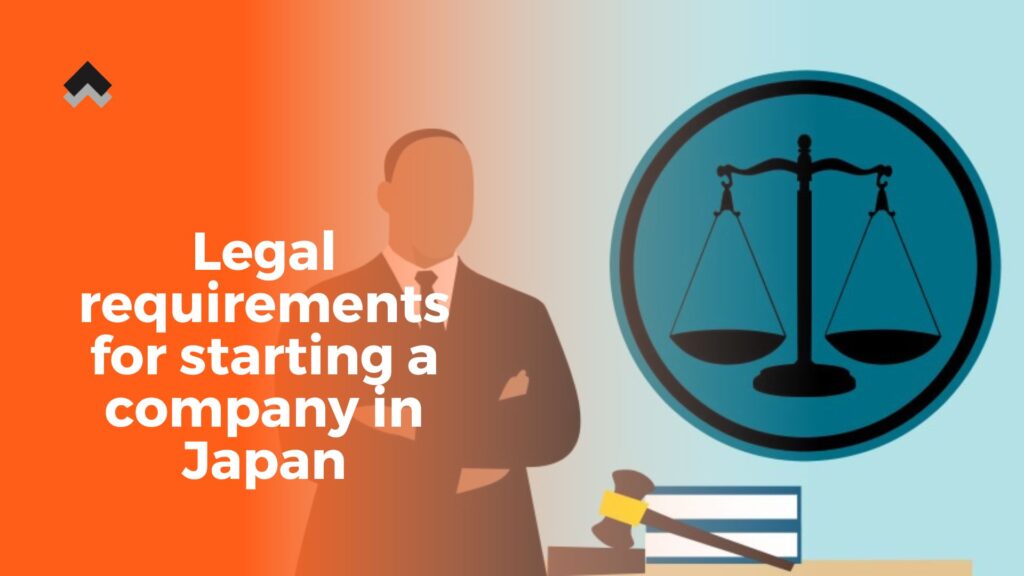There are many types of companies in Japan. Choosing the right corporate structure is a crucial decision for businesses operating in Japan. The corporate structure not only affects the legal and tax obligations of a business but also impacts its operations, investor relations, and long-term strategy. Japan offers several corporate structures, each with its unique features and benefits. The main types of corporate structures available include Kabushiki Kaisha (KK), Godo Kaisha (GK), Gomei Kaisha (GK), and Goshi Kaisha (GK).
Why Does Corporate Structure Matter?
Selecting the appropriate corporate structure is essential for legal protection, operational efficiency, and financial viability. It influences the company’s ability to raise capital, manage taxes, handle liabilities, and adhere to regulatory requirements. A well-chosen corporate structure aligns with the business’s goals and facilitates sustainable growth. For foreign investors, understanding these differences is crucial for successful market entry and long-term success in Japan. It also impacts the company’s ability to establish credibility and build trust with local partners and customers. Careful consideration of the structure can also optimize resource allocation and streamline decision-making processes.
Types of Companies in Japan
Kabushiki Kaisha (KK)
- Overview: Kabushiki Kaisha, often abbreviated as KK, is the most popular corporate structure in Japan. It is similar to a corporation in the United States and is preferred by large enterprises and companies seeking to attract significant investment.
- Governance: A KK offers a robust framework for governance, with a clear separation between ownership and management. This structure is highly regulated and provides a strong reputation, which can be beneficial when dealing with investors, partners, and customers.
- Setup Process: Establishing a KK involves several steps:
- Capital Investment: Although the minimum capital required to set up a KK is 1 yen, it is common for companies to invest a higher amount to demonstrate financial stability and attract investors.
- Registration Procedures: Preparation of articles of incorporation, obtaining a company seal, and registering with the Legal Affairs Bureau.
- Required Documentation: Articles of incorporation, notarized signatures of directors, and proof of capital contribution.
- Annual Meetings: KKs must hold annual general meetings (AGMs) where shareholders review and approve financial statements, elect directors, and discuss major business decisions. These meetings must be announced to shareholders in advance, with detailed agendas provided. Specific requirements include:
- Notification: Shareholders must be notified of the AGM at least two weeks in advance.
- Agenda: A detailed agenda must be provided, including financial statements, election of directors, and other major business decisions.
- Minutes: Minutes of the AGM must be recorded and kept for regulatory purposes.
Godo Kaisha (GK)
- Overview: Godo Kaisha, or GK, is akin to a limited liability company (LLC) in the United States. It is favored by small to medium-sized enterprises for its flexibility and simpler regulatory requirements compared to KK.
- Governance: GKs offer limited liability protection to their members and are relatively easy to set up and operate. This structure allows for a more informal management style, where owners can be directly involved in day-to-day operations without the need for a board of directors.
- Setup Process: The setup process for a GK is straightforward:
- Capital Investment: The minimum capital required is 1 yen.
- Registration Procedures: Preparation and submission of articles of incorporation to the Legal Affairs Bureau.
- Required Documentation: Articles of incorporation and proof of capital.
- Annual Meetings: GKs have more flexibility in terms of meetings and do not have the same stringent requirements for AGMs as KKs. Meetings can be conducted more informally as needed by the members.
Gomei Kaisha (GMeK) and Goshi Kaisha (GSK)
- Gomei Kaisha (GMeK): This is a type of partnership where all partners have unlimited liability. It is less common due to the high personal risk involved for the partners and is suitable for small businesses or professional firms where partners are closely involved in daily operations.
- Goshi Kaisha (GSK): This structure combines elements of both partnerships and corporations, with both general and limited partners. General partners have unlimited liability, while limited partners’ liability is restricted to their capital contribution. These structures are rarely used in modern business practices but may be considered in specific scenarios.
Key Differences and Features
| Feature | Kabushiki Kaisha (KK) | Godo Kaisha (GK) |
| Definition | A joint-stock company with a formal management structure. | A limited liability company with a simple and flexible management structure. |
| Credibility | Higher credibility and prestige, suitable for larger businesses. | Lower credibility compared to KK, limited appeal to investors. |
| Ease of setup | More complex and stricter regulations. | Fewer regulations and flexible management structure. |
| Cost | More expensive to set up | Simple and cost-effective setup |
| Capital Requirements | Minimum 1 yen (typically higher for credibility). | Minimum 1 yen. |
| Annual Meeting | Mandatory with specific regulatory requirements. | Flexible, less formalized. |
| Tax Rates | Typically ranges from 23.2% to 30.62%. | Typically ranges from 15% to 23.2%. |
| Accounting Standards | Strict accounting standards and deadlines. | Basic accounting standards and fixed deadlines. |
| Governance Structure | Clear roles for directors and officers, strict governance. | Less formalized roles, flexible governance. |

Legal and Regulatory Requirements
Kabushiki Kaisha (KK)
- Setup and Compliance Requirements:
- Registration Procedures: Preparation of articles of incorporation, obtaining a company seal, and registering with the Legal Affairs Bureau.
- Required Documentation: Articles of incorporation, notarized signatures of directors, and proof of capital contribution.
- Ongoing Regulatory Obligations: Annual general meetings, regular financial reporting, and compliance with corporate governance standards.
- Corporate Tax Rates: Typically ranges from 23.2% to 30.62% depending on income and other factors.
- Accounting Standards and Reporting Deadlines: KKs must follow specific accounting standards, prepare annual financial statements, and have them audited if required.
- Corporate Governance: Clear roles and responsibilities for directors and officers, with strict governance structures, including a board of directors and shareholder meetings.
Godo Kaisha (GK)
- Setup and Compliance Requirements:
- Registration Procedures: Preparation and submission of articles of incorporation to the Legal Affairs Bureau.
- Required Documentation: Articles of incorporation and proof of capital.
- Ongoing Regulatory Obligations: Fewer regulatory obligations, less frequent financial reporting.
- Corporate Tax Rates: Generally lower than KK, benefiting small to medium-sized enterprises.
- Accounting Standards and Reporting Deadlines: Adherence to basic accounting standards with more flexible reporting deadlines.
- Corporate Governance: Less formalized roles and responsibilities, more flexible governance structures.
Which Type is Right for You?
Choosing Kabushiki Kaisha (KK)
- Ideal for businesses aiming for large-scale operations, significant capital investment, and a need to attract institutional investors.
- Formal structure and robust governance make KKs suitable for companies seeking a strong market presence and reputable brand.
- Beneficial for businesses planning to go public or requiring substantial external financing.
Choosing Godo Kaisha (GK)
- Suitable for small to medium-sized enterprises prioritizing flexibility and ease of operation.
- Entrepreneurs and start-ups benefit from the simpler setup process and lower administrative costs.
- Advantageous for businesses focusing on rapid growth and adaptability, where owners wish to be actively involved in management.

Final Thoughts
Choosing the appropriate corporate structure is a critical step for any business planning to operate in Japan. It affects every aspect of the business, from daily operations to long-term strategy. Businesses must weigh the advantages and disadvantages of each structure, considering their specific needs and goals. Professional advice can provide valuable insights and help ensure a successful business venture in Japan. The right structure can enhance the company’s ability to comply with local laws and regulations and improve its overall competitiveness in the Japanese market. Understanding these nuances is vital for building a sustainable and profitable presence in Japan.


